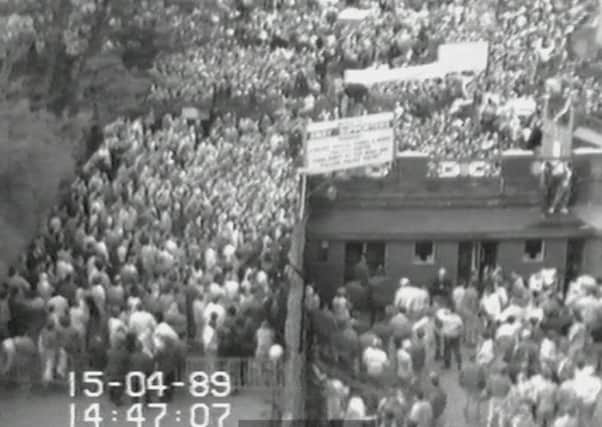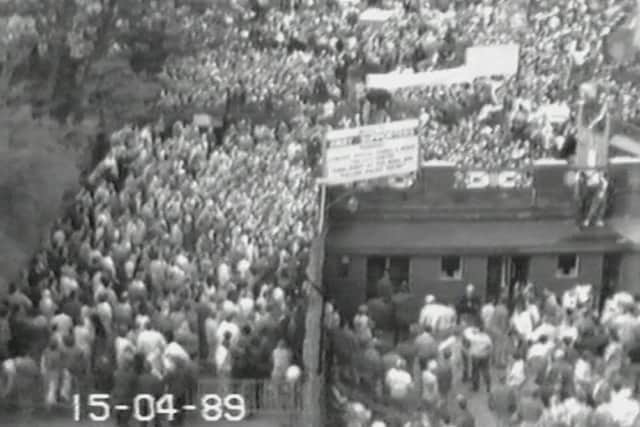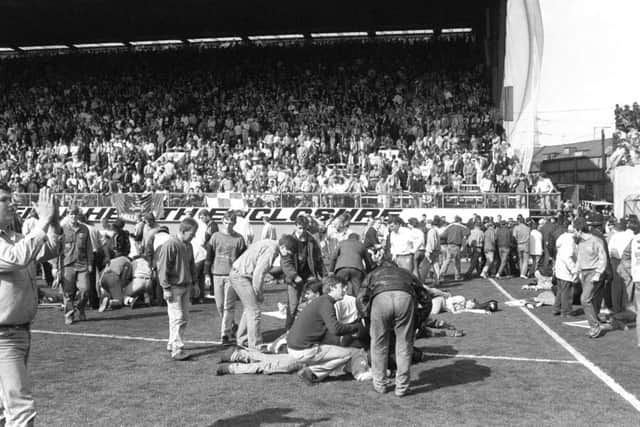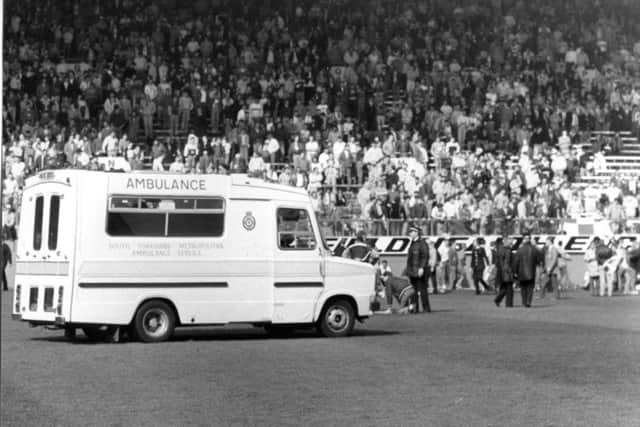What the jury didn't know: Yorkshire police and ambulance chiefs in '˜culture of denial' - plus verdicts in full


In legal argument - not before the jury - it was said that both organisations had previously, and in some detail, admitted responsibility for their roles in the disaster.
Each did so following publication of the 2012 Hillsborough Independent Panel report, the court heard, with “fulsome apologies” still on their respective websites.
Advertisement
Hide AdAdvertisement
Hide Ad



Advertisement
Hide AdAdvertisement
Hide AdHowever, a different picture emerged during the hearings in Warrington, said Pete Weatherby QC, in an application to the Coroner Sir John Goldring, for him to make “prevent future deaths” reports after the jury conclusions.
Mr Weatherby, on behalf of 22 of the families, submitted: “Despite their public stance, both organisations have sought to minimise their responsibility through their conduct in these inquests, to the extent that the jury is unaware of any acceptance of responsibility or fault.


“This institutional defensiveness risks subverting the process and raises a clear inference that these two organisations are preoccupied with their own position rather than engaged in a learning process which could lead them to adopt processes which would prevent future major incident deaths.”
Advertisement
Hide AdAdvertisement
Hide AdMichael Mansfield QC, representing 77 of the families, added, in support of the application, that it was worse than mere defensiveness but amounted to “a culture of denial”.
Mr Weatherby urged Sir John to write to both the South Yorkshire Police and Crime Commissioner and the Home Secretary over the conduct of the present Chief Constable during the inquests.
Similarly, he said the Coroner should also write to the Secretary of State for Health regarding the conduct of the the current Chief Executive of Yorkshire Ambulance Service.


In addition, he also said the Coroner should raise concerns over “a lack of policy” over the use and retention of police pocket notebooks.
Advertisement
Hide AdAdvertisement
Hide AdBut Sir John replied he could see “no sensible basis” for making such reports to the relevant authorities.
He explained: “Even assuming the two organisations have conducted themselves as described, it does not follow that gives rise to a concern that there is a risk of future deaths such as those which occurred at Hillsborough.
“If they did act in a manner inconsistent with their previous admissions, it does not logically lead to the conclusion that there exists the risk of future deaths.
“Such conduct would not demonstrate that either organisation was incapable of learning safety lessons for the future. It would say nothing about their capability to do so.”
Advertisement
Hide AdAdvertisement
Hide AdHe continued: “No evidence has been adduced during the course of the inquests that their conduct of these proceedings reflects such an inability now to learn safety lessons from what happened in 1989.


“I know nothing about the approach in 2016 of either organisation to issues of safety in the context of mass sporting events. It was not appropriate during the course of these inquests to adduce such evidence.”
He said evidence heard at the inquests had suggested “very considerable changes” had taken police in both police and ambulance procedures since the disaster.
Sir John said it also did not follow that the the way evidence was gathered and pocket books were kept in 1989 had “any implications at all for the safety of fans at football matches (or anyone else) in 2016”.
Advertisement
Hide AdAdvertisement
Hide AdHILLSBOROUGH VERDICT IN FULL: THE 14 QUESTIONS THE JURY ANSWERED
The Hillsborough jury was asked to answer 14 questions about the disaster. They were all yes/no answers but the jury was allowed to give a further explanation for their decisions if they wished to.
The answers they returned were:
• Question One - Basic facts of the disaster
Do you agree with the following statement which is intended to summarise the basic facts of the Disaster: “Ninety-six people died as a result of the Disaster at Hillsborough Stadium on 15 April 1989 due to crushing in the central pens of the Leppings Lane terrace, following the admission of a large number of supporters to the Stadium through exit gates.”
Answer: Yes
• Question Two - Police planning for the semi-final match
Was there any error or omission in police planning and preparation for the semi-final match on 15 April 1989 which caused or contributed to the dangerous situation that developed on the day of the match?
Answer: Yes
Advertisement
Hide AdAdvertisement
Hide AdThe jury’s explanation was: “The jury feel that there were major omissions in the 1989 Operational Order including:
* specific instructions for managing the crowds outside the Leppings Lane turnstiles;
* specific instructions as to how the pens were to be filled and monitored;
* specific instructions as to who would be responsible for the monitoring of pens.”
Advertisement
Hide AdAdvertisement
Hide Ad• Question Three - Policing of the match and the situation at the turnstiles
Was there any error or omission in policing on the day of the match which caused or contributed to a dangerous situation developing at the Leppings Lane turnstiles?
Answer: Yes
The jury’s explanation was: “Police response to the increasing crowds at Leppings Lane was slow and un-coordinated. The road closure and sweep of fans exacerbated the situation. No filter cordons were placed in Leppings Lane. No contingency plans were made for the sudden arrival of a large number of fans. Attempts to close the perimeter gates were made too late.”
• Question Four - Policing of the match and the crush on the terrace
Advertisement
Hide AdAdvertisement
Hide AdWas there any error or omission by commanding officers which caused or contributed to the crush on the terrace?
Answer: Yes
The jury’s explanation was: “Commanding officers should have ordered the closure of the central tunnel before the opening of gate C was requested, as pens three and four were full. Commanding officers should have requested the number of fans still to enter the stadium after 2.30pm. Commanding officers failed to recognise that pens three and four were at capacity before gate C was opened. Commanding officers failed to order the closure of the tunnel as gate C was opened.”
• Question Five - The opening of the gates
When the order was given to open the exit gates at the Leppings Lane end of the Stadium, was there any error or omission by the commanding officers in the control box which caused or contributed to the crush on the terrace?
Answer: Yes
The jury’s explanation was: “Commanding officers did not inform officers in the inner concourse prior to the opening of gate C. Commanding officers failed to consider where the incoming fans would go. Commanding officers failed to order the closure of the central tunnel prior to the opening of gate C.”
• Question Six - Determination on unlawful killing issue
Advertisement
Hide AdAdvertisement
Hide AdAre you satisfied, so that you are sure, that those who died in the Disaster were unlawfully killed?
Answer: Yes (By a 7-2 majority verdict)
• Question Seven - Behaviour of the supporters
Was there any behaviour on the part of football supporters which caused or contributed to the dangerous situation at the Leppings Lane turnstiles?
Answer: No
If your answer to the question above is “no”, please answer the following question. Was there any behaviour on the part of football supporters which may have caused or contributed to the dangerous situation at the Leppings Lane turnstiles?
Answer: No